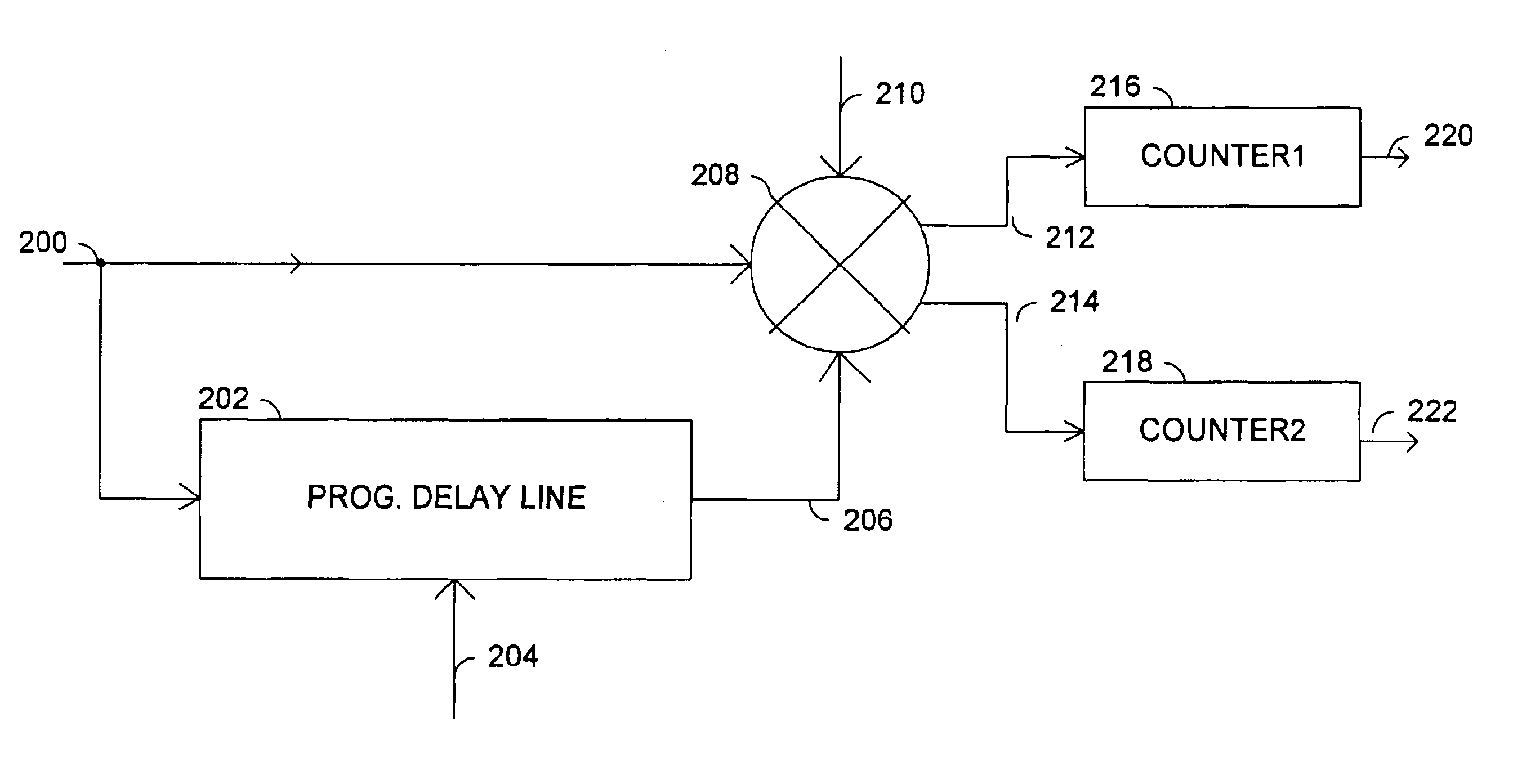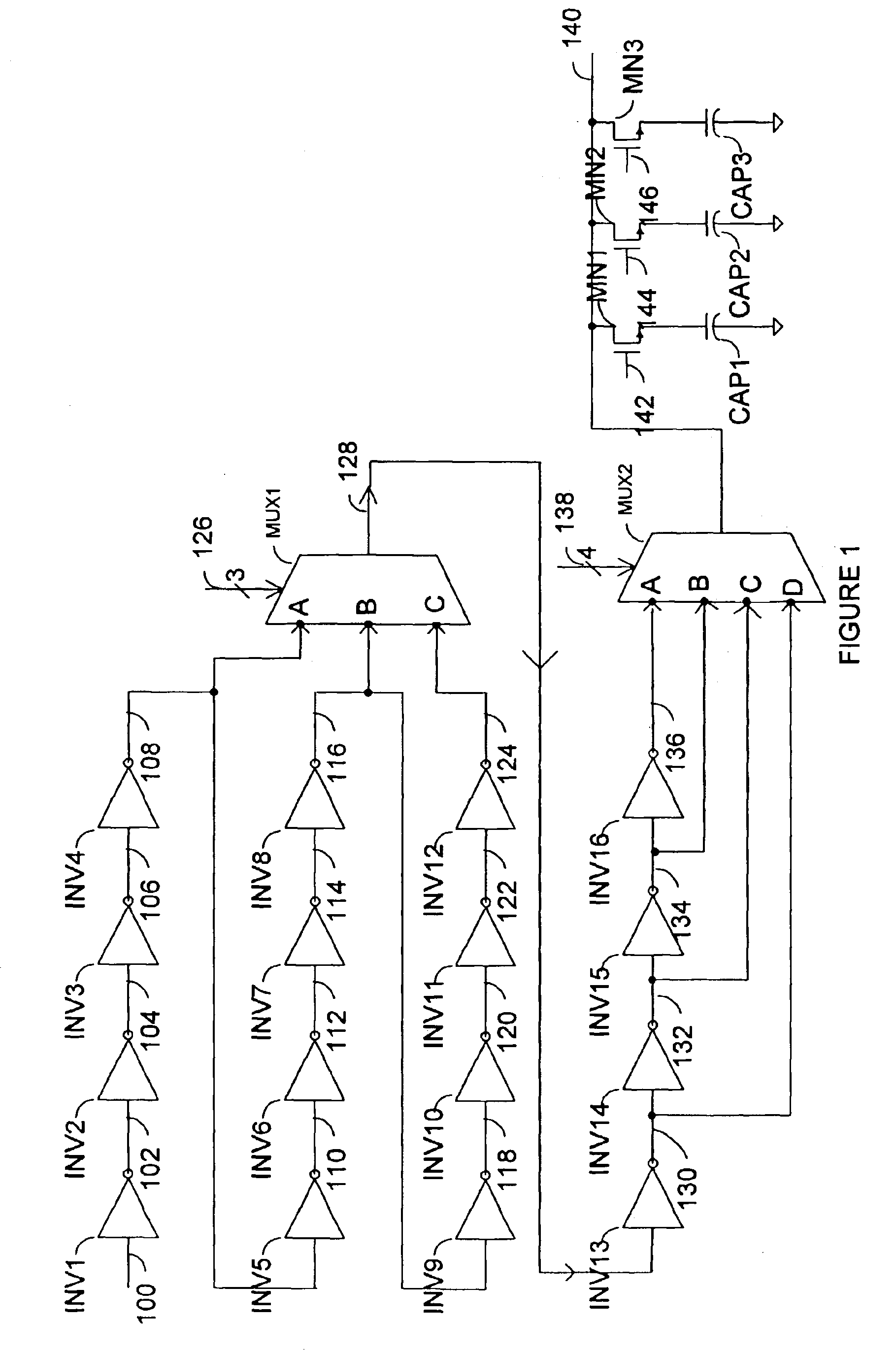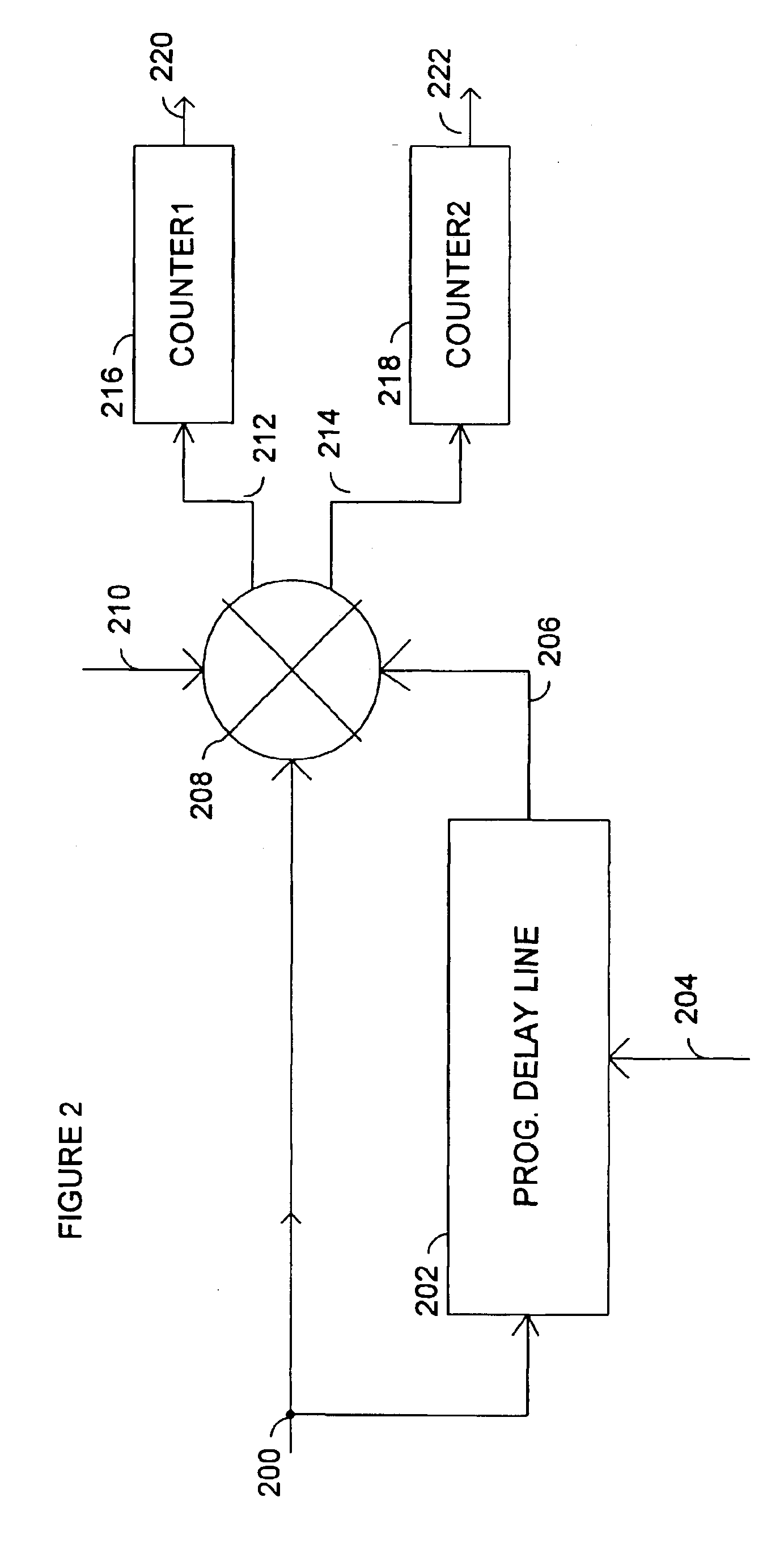Method and circuit for measuring on-chip, cycle-to-cycle clock jitter
a technology of cycle-to-cycle clock jitter and measurement method, which is applied in the direction of frequency measurement arrangement, frequency to phase shift conversion, instruments, etc., can solve the problems of difficult testing of the jitter performance of the microprocessor, cycle-to-cycle jitter may occur, and the difficulty of clock distribution
- Summary
- Abstract
- Description
- Claims
- Application Information
AI Technical Summary
Problems solved by technology
Method used
Image
Examples
Embodiment Construction
FIG. 1 is a schematic drawing of a programmable delay line. The input, 100, to the programmable delay line is connected to the input of inverter INV1. The output, 102, of inverter INV1 is connected to the input, 102, of inverter INV2. The output, 104, of inverter INV2 is connected to the input, 104, of inverter INV3. The output, 106, of inverter INV3 is connected to the input, 106, of inverter INV4. The output, 108, of inverter INV4 is connected to the input, 106, of inverter INV5 and input A of MUX1. The output, 110, of inverter INV5 is connected to the input, 110, of inverter INV6. The output, 112, of inverter INV6 is connected to the input, 112, of inverter INV7. The output, 114, of inverter INV7 is connected to the input, 114, of inverter INV8. The output, 116, of inverter INV8 is connected to the input, 116, of inverter INV9 and input B of MUX1. The output, 118, of inverter INV9 is connected to the input, 118, of inverter INV10. The output, 120, of inverter INV10 is connected t...
PUM
 Login to View More
Login to View More Abstract
Description
Claims
Application Information
 Login to View More
Login to View More - R&D
- Intellectual Property
- Life Sciences
- Materials
- Tech Scout
- Unparalleled Data Quality
- Higher Quality Content
- 60% Fewer Hallucinations
Browse by: Latest US Patents, China's latest patents, Technical Efficacy Thesaurus, Application Domain, Technology Topic, Popular Technical Reports.
© 2025 PatSnap. All rights reserved.Legal|Privacy policy|Modern Slavery Act Transparency Statement|Sitemap|About US| Contact US: help@patsnap.com



